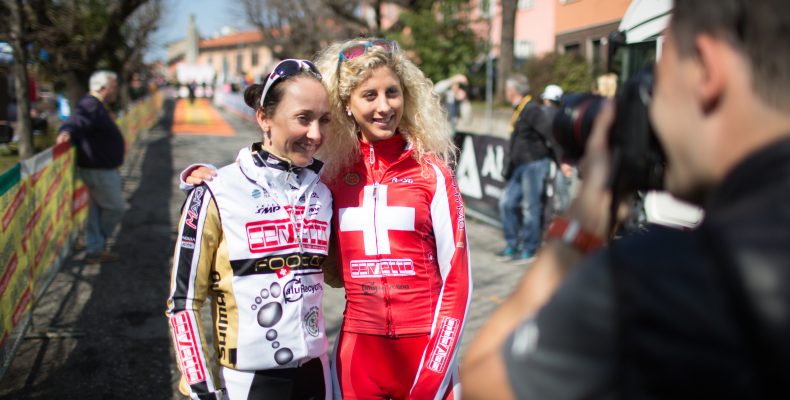For a sport to grow globally today, it must have a strategy to connect with fans in multiple ways. Television used to be the most important way which fans watched sports, but as the cable and satellite TV subscription model has fallen apart in the last few years, there is increased focus on digital platforms. Streaming video, social media, and web search technologies help fans and sports to connect together in the marketplace today, and we no longer talk in terms of fans “watching” sports, but rather, we talk about how fans “consume” the content which sports produce. This is why image rights – which is the basis for the revenues of all different kinds of broadcasts – is so important!
So what are image rights, and why are they so important to my career as a professional cyclist? Image rights are one of your most important assets as an athlete. Image rights are the legal permissions which define how your picture or a likeness of you can be used to market a product, be shown in advertisements, or used in any kind of promotion. For example, when your cycling team puts your picture on its website or a press release, that is one use of your image rights. Similarly, if a sponsor shows you in a television or internet video to advertise a product, that is also a use of your image rights. In many other team sports like the NBA, the broadcast of games and events can only happen if the athletes (as part of a union) allow the teams and/or the broadcaster to use their image rights in exchange for monetary compensation, which is defined in a collective bargaining agreement.
Your image rights are an important part of your value as a professional athlete. If you do not exercise some control over your image rights, other parties could use your image and likeness to sell their products or promote an event without compensating you. A woman professional cyclist’s image rights are in some ways different than that of a man’s. There are scientific and economic studies which show that a male athlete’s image rights are ‘valued’ by how many races or championships that he wins. A woman athlete’s image rights are valuable if fans of her sport can identify and relate to her in a meaningful way.
For example, Anna Kournikova was not the winningest tennis player, but her image rights are extremely valuable to her even today because so many women identify with who she is: a tough competitor who often lost despite trying her hardest, who always came back and tried to improve herself, and who appeared graceful and beautiful while competing. This connected with millions of women tennis fans, and enabled Kournikova to license her image rights to many sponsors who wanted to connect with her fans. Not every woman cyclist will be a world champion, but every professional woman cyclist can be a role model for strong women and leverage this to her benefit.
Another example which pro cycling can learn from is the National Basketball Association, which is the world’s premier basketball league. Over the last 20 years, the NBA has built up the value for the rights to broadcast the games on different television networks. It does this in two ways: first, the players license their image rights back to the league for a large sum of money, and then the league can negotiate television contracts with networks around the world. The second way the NBA builds value from image rights is when the players retain the rights, then negotiate deals with the broadcasters and share the revenues with the league.
Recently, the NBA players’ image rights reverted back to the players, and its professional union, the NBA Players Association (NBPA), is pursuing a mixed strategy of digital content and TV rights to create better revenue opportunities for the sport. It can do this by licensing its own web streaming “league” subscriptions, which fans can pay for the right to watch all the games for a high premium cost, or just “packages” of their favorite teams. But it can also offer unique team and player content, like interviews, reality programs, pre-game programming, and entertainment (like classic games from its videotape archives). But the important thing is, the NBPA is not limiting itself to just one way of creating value from the image rights.
You may be asking, who owns my image rights today: my team, the UCI, my agent…. Who? Unfortunately, most contracts in all of professional cycling are written in a way that reduces, or even prevents, your ownership of your image rights while you racing for a professional team. As an individual athlete, you should consult with a legal advisor before you sign any contract with your team to ensure that you have some control of your image rights. In reality, the team does not grant image rights to you, it is you who grant the team any permission to use your image! You should negotiate with your team to make sure that this most important aspect of your value as an athlete is protected.
And that is an important role which a healthy and strong athlete union can provide for women professional cyclists today, and in the future. A union like The Cyclists’ Alliance can represent your image rights and license them to the teams or a future “cycling league” like a reformed Women’s WorldTour, so that the most value can be earned from television and digital media broadcasts. Or, The Cyclists’ Alliance can build a digital platform with input from all of the sport’s economic stakeholders to build that value for everyone. The important part of image rights is you as the athlete, because no race can take place without your hard work and dedication. It is one of the many reasons you have for joining The Cyclists’ Alliance: to protect your rights so that you have a healthy, successful, and rewarding career.

